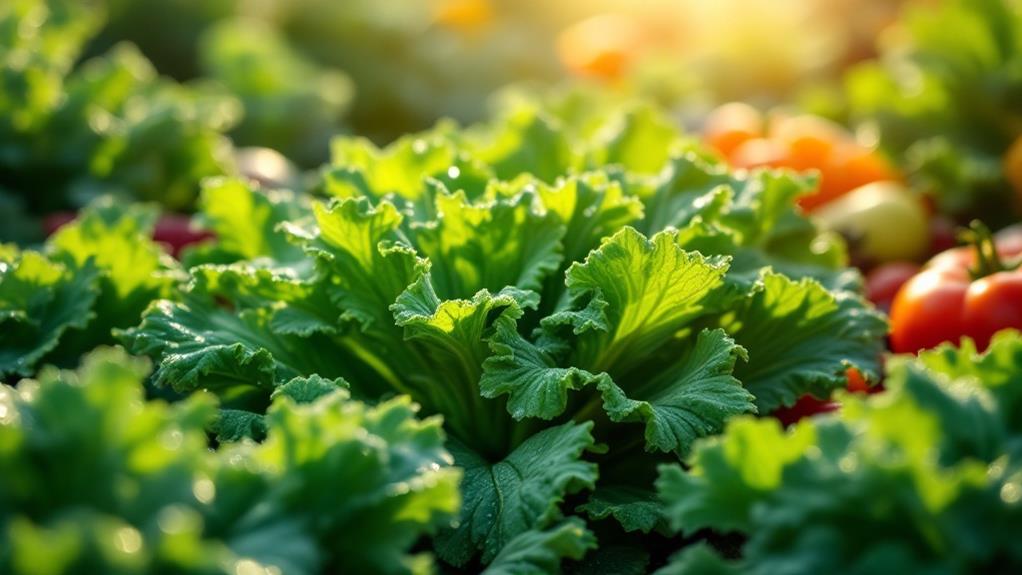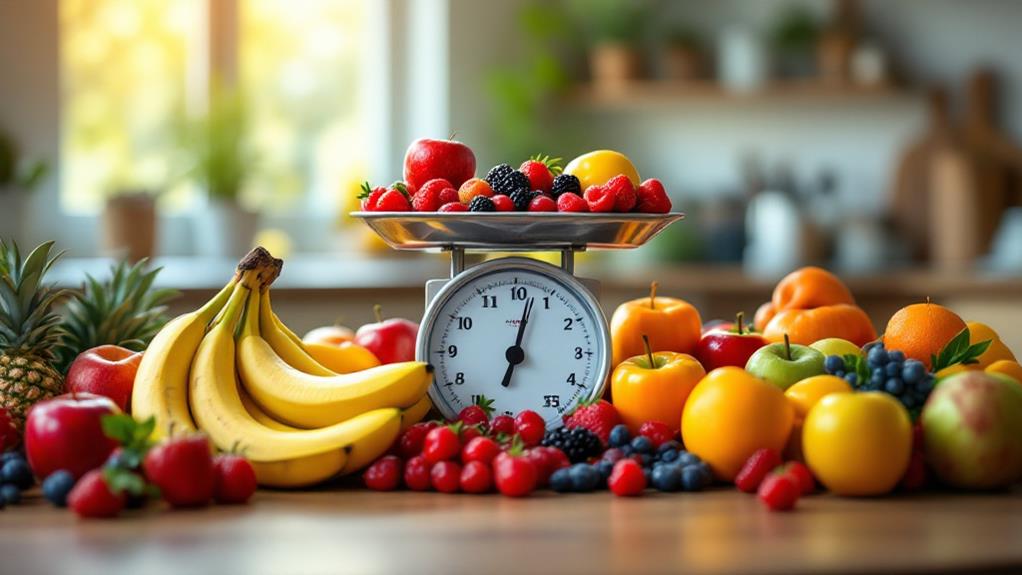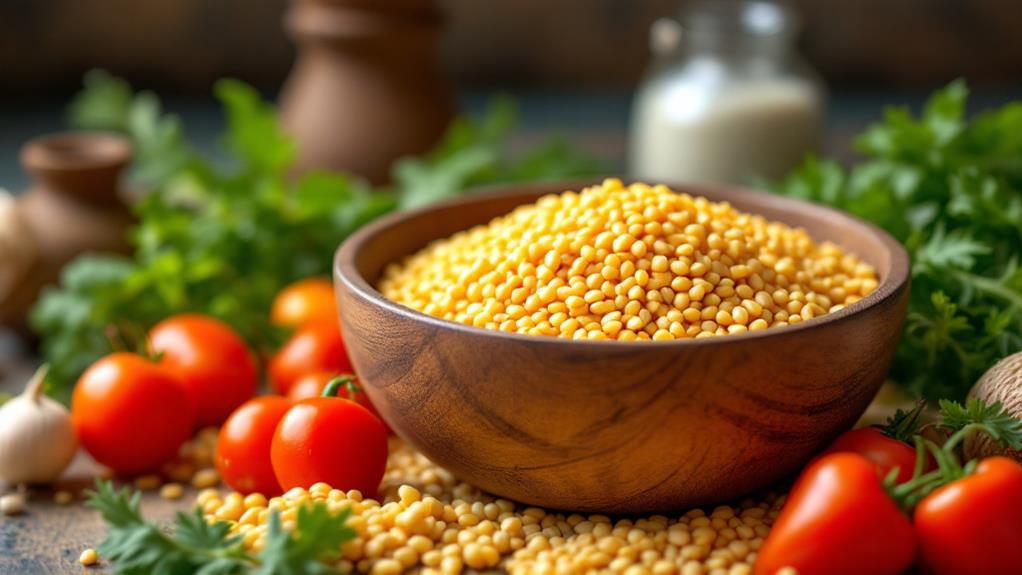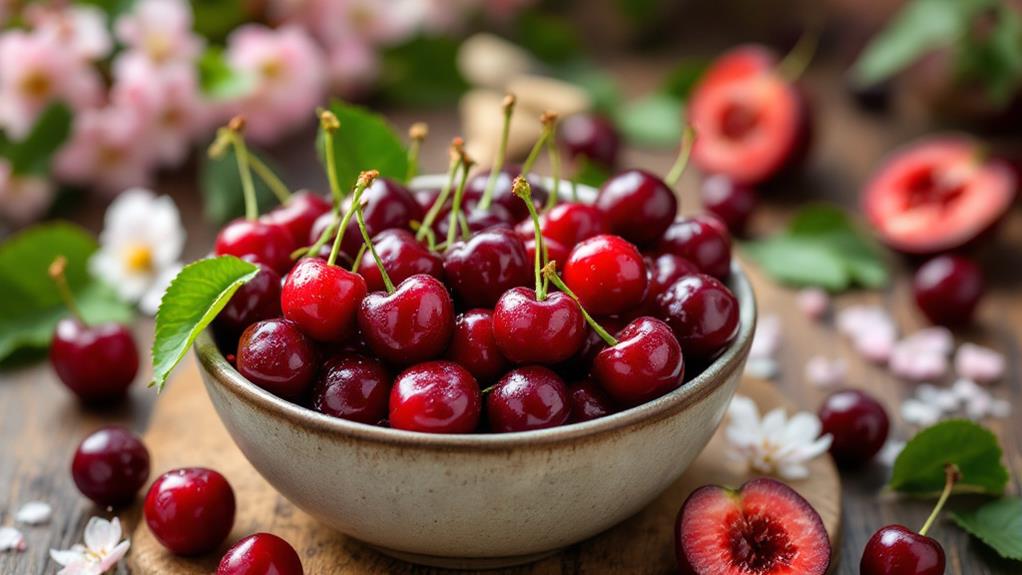A Comprehensive Guide to the Types and Benefits of Salak Fruit
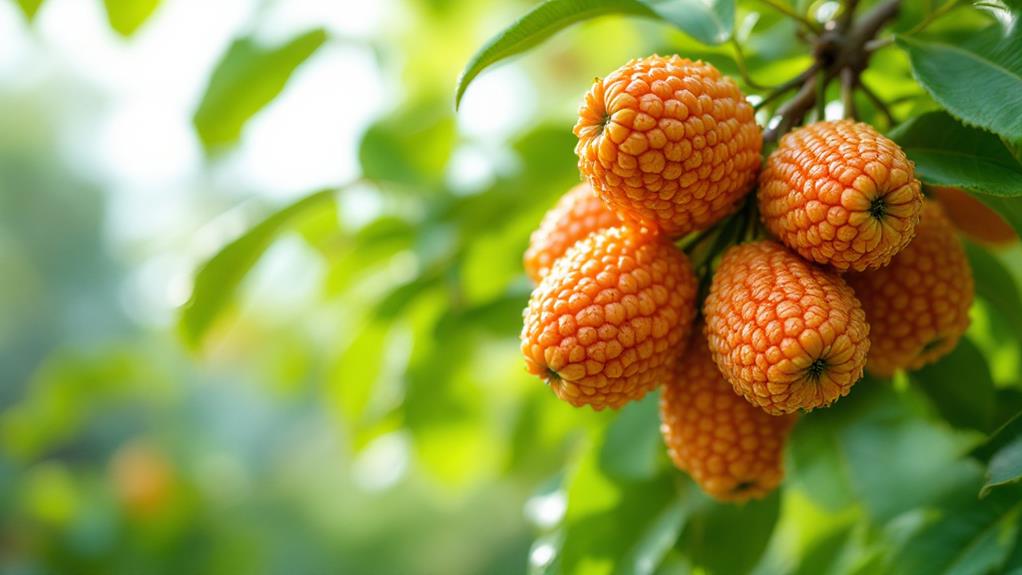
Uncover the fascinating qualities of salak fruit, a native gem of Indonesia. Known as snake fruit for its scaly skin, salak offers different types like the sweet salak pondoh and the tangy salak sidempuan. It's low in calories and packed with fiber, vitamin C, and potassium, promoting digestion, immune health, and blood pressure regulation. Salak's antioxidants fight oxidative stress, supporting overall health. Enjoy it fresh in salads, pickled, or blended in smoothies. With minimal pesticide needs, salak contributes to sustainable farming. Curious about its wider uses and benefits? There's more to reveal about this exotic jewel.
Understanding Salak and Its Origins
Salak, or Salacca zalacca, is a fascinating fruit native to the lush landscapes of Indonesia, with its primary roots in the regions of Java and Sumatra. This tropical fruit thrives in these areas, benefiting from the abundant rainfall and fertile soil. You'll find salak growing in clusters at the base of short-stemmed palm trees, each fruit encased in a distinctive scaly, reddish-brown skin that resembles snake skin. When you peel back this exotic exterior, you're greeted by a crunchy texture and a sweet-sour flavor that's truly unique.
Beyond its intriguing taste, salak enhances a rich nutrient profile. It's packed with vital vitamins and minerals, offering numerous health benefits. Incorporating salak into your diet can support digestion, improve vision, and even elevate your immune system. But this fruit's significance goes beyond nutrition. In Java and Sumatra, salak holds cultural significance, symbolizing prosperity and abundance. It's often featured in traditional ceremonies and used in local medicine.
Understanding salak's origins and its role in Indonesian culture gives you a deeper appreciation for this remarkable fruit. Regardless of if you're drawn to its health benefits or its unique flavor, salak is a true gem of the tropics.
Varieties of Salak Fruit
Among the array of tropical fruits, snake fruit offers a fascinating examination of flavors and textures. When you investigate the varieties of salak fruit, you'll uncover two primary types: Salak pondoh and Salak sidempuan. Salak pondoh, or Salacca zalacca, is a delicious fruit celebrated for its sweet taste and crunchy texture. Its popularity makes it a sought-after and often pricier option in markets. In contrast, Salak sidempuan, known scientifically as Salacca sumatrana, presents a more astringent flavor with a softer texture, appealing to those who appreciate a tangy fruit experience.
Besides these, there's the Salak Bali, an exotic fruit recognized for its larger size and sweetness, commonly found in Indonesian markets. Each variety offers distinct culinary uses, from snacking to enhancing desserts or salads. The nutritional value and health benefits vary with each type, contributing distinctly to your diet.
Investigating these varieties not only broadens your palate but also introduces you to the diverse world of tropical fruits. Regardless of whether you prefer the sweetness of Salak pondoh or the tang of Salak sidempuan, each variety adds a distinctive touch to your culinary adventures.
Nutritional Profile of Salak
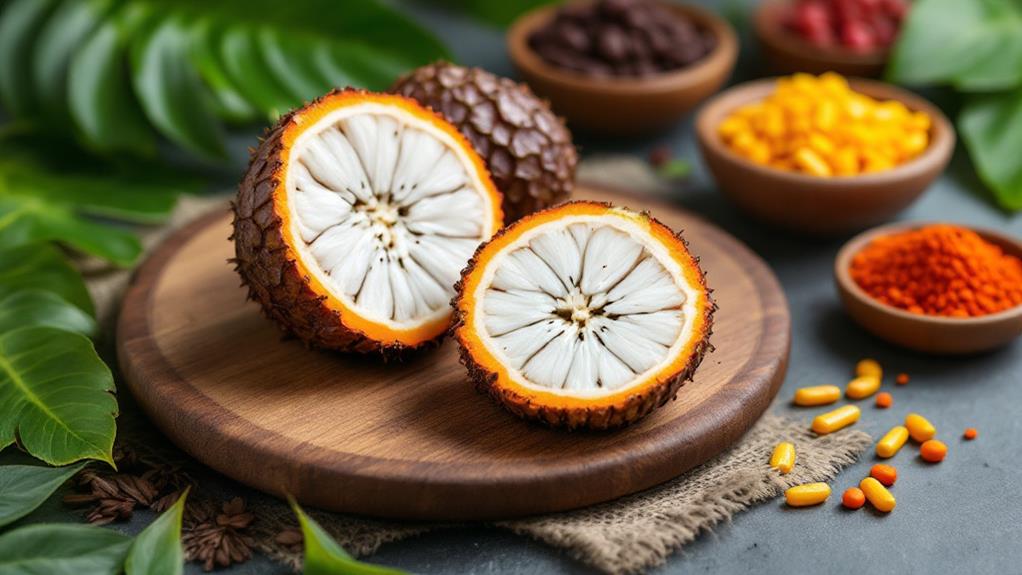
In regard to its nutritional profile, salak fruit stands out as a smart choice for those mindful of their health. With only 82 calories per 100 grams, it's a weight-friendly option that won't derail your diet. The considerable dietary fiber content in salak fruit supports digestive health by enhancing feelings of fullness and promoting regular bowel movements. This makes it an excellent supplement to any diet focused on maintaining a well-functioning digestive system.
Beyond fiber, salak fruit is packed with important vitamins and minerals. Its high vitamin C content plays a key role in strengthening your immune system, while also providing antioxidant content to combat free radicals in the body. These antioxidants are fundamental for maintaining the overall health of the body, protecting cells from damage and supporting healthy skin.
The fruit's impressive potassium content aids in muscle function and helps regulate blood pressure, further enhancing its reputation as a nutritional powerhouse. Moreover, salak contains beta-carotene, offering five times more than watermelon and mango, which contributes to eye health and enhances its overall antioxidant benefits. Incorporating salak fruit into your diet can greatly support your nutritional needs and promote healthy living.
Health Benefits of Salak
Imagine biting into a salak fruit and enjoying not just its unique taste but also its myriad health benefits. Packed with nutrients, salak boasts a high fiber content that aids your digestive system. It alleviates diarrhea and promotes satiety, playing a vital role in weight management. When you consume salak, you benefit from its ability to keep you full longer without piling on calories, with only about 82 calories per 100 grams.
Salak is also excellent for your cardiovascular health. Rich in potassium, it helps regulate blood pressure, reducing strain on your heart. This mineral is fundamental for maintaining a healthy cardiovascular system, ensuring your heart functions effectively. Plus, salak's antioxidants protect against oxidative stress, potentially lowering your risk of chronic diseases and cancer.
Eye health gets a lift from salak too. This fruit is rich in beta-carotene, which provides five times more than watermelon and mango, promoting better vision and reducing risks of vision-related issues. Including salak in your diet means you're investing in your complete well-being, from maintaining a healthy weight to supporting heart health and protecting your eyes.
Culinary Uses of Salak
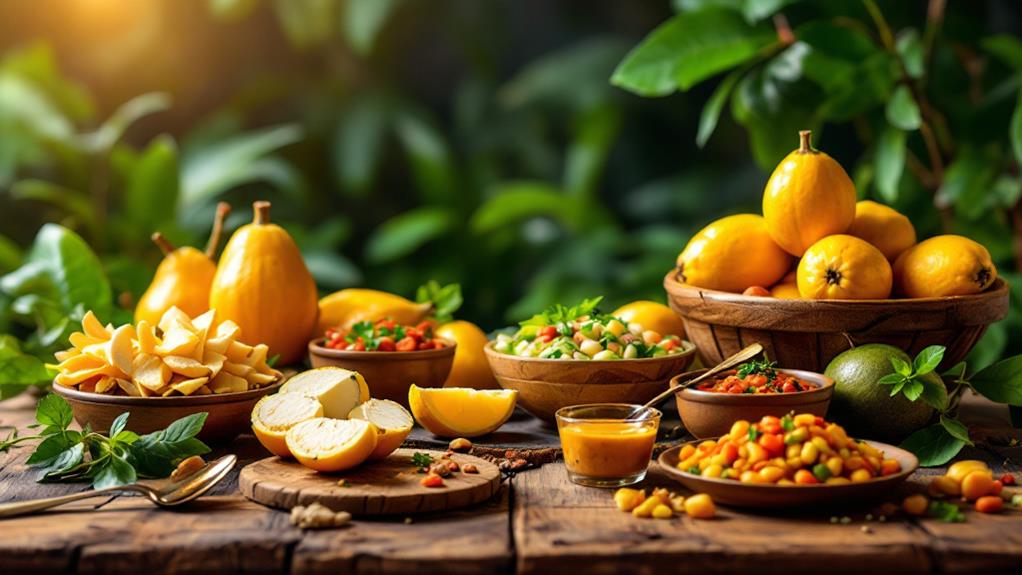
While salak fruit offers impressive health benefits, it also shines in the culinary world with its versatility and unique flavor. You can enjoy salak fresh by slicing or dicing it, making it a delightful enhancement to your fruit salads, adding both texture and flavor. When blended into smoothies, salak contributes a revitalizing taste, perfect for a nutritious beverage.
Its natural sweetness makes salak an excellent ingredient for desserts. You can use it in jams, ice creams, and even candies, enhancing the complete taste experience with its distinct flavor. If you're feeling adventurous, try pickling salak to create a tangy condiment. This pickled version pairs wonderfully with savory dishes, adding a unique twist to your traditional recipes.
In Southeast Asian cuisine, salak often finds its way into curries and stir-fries. Its sweet and slightly acidic flavor profile enriches these dishes, elevating their taste. Furthermore, salak's versatility allows you to use it as a topping for pancakes and waffles, offering a nutritious enhancement to your breakfast. Regardless of being in beverages, savory dishes, or desserts, salak's culinary uses are as diverse as they are delicious.
Salak in Traditional Medicine
Salak fruit, often known as snake fruit, has long been valued in traditional medicine for its myriad health benefits. If you're dealing with digestive issues like diarrhea, snake fruit can be your ally. Its high tannin content helps firm up stool, providing relief. But that's not all—salak is a powerhouse of vitamin C and antioxidant properties that strengthen your immune system, protecting you against different ailments.
Incorporating snake fruit into your diet can also improve your vision and eye health. Its beta-carotene content surpasses that of watermelon and mango, making it a stellar choice for maintaining sharp eyesight. Need a natural energy increase? Salak is traditionally used to elevate energy levels and liveliness. Its carbohydrate content stimulates your metabolism, giving you that much-needed pep in your step.
Don't overlook its benefits for skin health either. Rich in antioxidants, snake fruit combats oxidative stress, which can lead to premature aging. By incorporating salak into your routine, you're taking a step toward healthier, more resilient skin. With all these health benefits, it's clear why salak remains a cherished component in traditional medicine practices.
Growing Conditions and Cultivation

When cultivating salak fruit, ideal conditions are crucial for a successful harvest. You'll find that salak thrives in tropical climates with ample rainfall and lush, well-drained soil. Countries like Indonesia, Thailand, and Malaysia provide the perfect environment for its growth. The short-stemmed palm trees, on which salak grows, cluster together at the base, making them easy to care for and harvest. With temperatures ranging from 25°C to 35°C (77°F to 95°F) and high humidity levels, these areas are prime for salak cultivation.
You'll appreciate that salak is an environmentally friendly crop, requiring minimal pesticides. This makes it a great choice for promoting sustainable agricultural practices. By growing salak, you're not only supporting local economies but also contributing to the health of the soil. The salak trees offer shade and help prevent soil erosion, enhancing soil health in the process.
Tips for Selecting and Storing Salak
Selecting the best salak fruit involves looking for firm, unblemished skin with a reddish-brown hue, indicating ripeness and quality. Avoid those with soft spots or a dull appearance, as these can signal over-ripeness or decay. Such attention to detail guarantees you're getting the freshest salak with juicy flesh ready to consume.
Once you've selected your salak, proper storage is key to maintaining its freshness. Keep salak at room temperature if you plan to enjoy it soon, as this preserves its ideal taste and texture. If you need to extend its shelf life, refrigerate it for a few days, but keep in mind that salak doesn't stay at its best for long. Consuming it within a few days of purchase is ideal to savor its unique flavor.
When it comes to preparation, handling the salak is simple. Carefully peel away the tough outer skin to expose the delicious, juicy flesh inside. This fruit can be consumed fresh, offering a delightful taste, or incorporated into different dishes, enhancing their flavor profile. By following these tips, you guarantee that every salak you choose and store is of the highest quality, ready to be enjoyed.
Potential Risks and Considerations
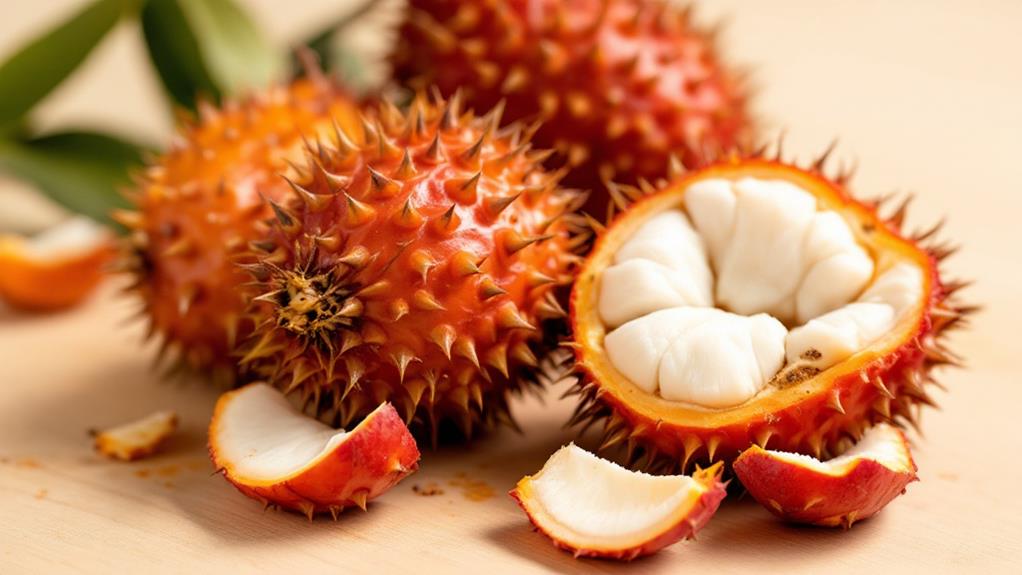
While salak, or snake fruit, is often praised for its unique taste and nutritional benefits, it is crucial to be aware of some potential risks associated with its consumption. Eating too much snake fruit can lead to digestive discomfort due to its high fiber content. Therefore, moderation is key to enjoying its benefits without the downside. Furthermore, some people may experience allergic reactions, especially if they're sensitive to related fruits or nuts.
Here are some significant considerations:
- Digestive Discomfort: High fiber levels can upset your stomach if consumed excessively.
- Allergic Reactions: If you're prone to allergies, be cautious when trying snake fruit.
- Wash Thoroughly: Always clean the fruit thoroughly to remove pesticides or contaminants.
- Interact with Medications: Consult healthcare providers about potential interactions with your medications.
It is also crucial to take into account individual health conditions and dietary needs when including snake fruit in your diet. If you're on medication, check with healthcare providers to verify there won't be adverse interactions. Remember, moderation is key, so enjoy salak in reasonable amounts while being mindful of your body's responses. This balanced approach allows you to savor its exotic flavor without compromising your health.
Salak in Global Markets
Salak fruit is making waves in global markets, carving out a niche for itself among exotic fruit enthusiasts. As consumers in regions like Australia, the Middle East, and Europe increasingly seek out unique flavors, salak stands out with its distinctive taste and nutritional benefits. Known for its high fiber content and antioxidant properties, salak is not just a tasty treat but also a health-conscious choice. This surge in demand has led to the creation of diverse salak-based products such as juices, jams, and snacks, which are gaining popularity worldwide.
Indonesia, the largest producer of salak, plays a significant role in meeting this growing demand. By exporting substantial quantities, it not only stimulates the local economy but also supports small-scale farmers who rely on these international markets. The global shift towards healthier eating habits further highlights salak's appeal, as more people become aware of its health benefits.
Moreover, salak's resilience to climate change and its minimal need for pesticides make it ideal for sustainable agricultural practices. This sustainability factor improves its attractiveness in global markets, ensuring that salak continues to thrive among the world's exotic fruits, offering both taste and nutritional value.

